
 |
||
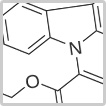 |
Vinpocetine |
Vinponature is a very high quality form of Vinpocetine specially designed for use in dietary
supplements for memory enhancement. Vinpocetine is a derivative of Vincamine, naturally
occurring in the periwinkle plant, Crioceras longiflorus. Clinical studies suggested that it
facilitates cerebral metabolism by blood vessels dilating to improve blood flow to the brain1,2,3
increasing glucose 4 and oxygen utilization by neurons,5 making red blood cells more pliable
and inhibit aggregation of platelets,6 and production of neurotransmitters involved in the
process of memory formation.7 It also has antioxidant properties work on protecting the brain
cells from the damaging effect of free radicals.8 Research has shown that the effects of this
compound go beyond mere prevention and turn it into a powerful memory and concentration
enhancer. Clinical studies have also shown that Vinpocetine may help to maintain healthy
microcirculation in the inner vital organs of ears and eyes.9,10 Vinpocetine has been identified as
a potent anti-inflammatory agent that might have a potential role in the treatment of
Alzheimer’s disease and Parkinson’s disease. Levels peak in the bloodstream within an hour and
a half after ingestion. |
||
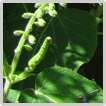 |
Sacha Inchi |
Sacha Inchi, Plukenetia volubilis also called Incan peanut, native of the Peruvian amazon is an
oleaginous (containing oil) plant. Its seeds are the most natural source of oil that used for oil
production destined for human consumption.
Extensive research indicates that omega-3 fatty acids reduce inflammation and help prevent certain chronic diseases such as heart disease and arthritis. These essential fatty acids are highly concentrated in the brain and appear to be particularly important for cognitive and behavioral function.11 We should know that it is very important to maintain a balance between omega-3 and omega-6 fatty acids in the diet.12 Omega-3 fatty acids help reduce inflammation and most omega-6 fatty acids tend to promote inflammation. An inappropriate balance of these essential fatty acids contributes to the development of disease while a proper balance helps maintain and even improve health. A healthy diet should consist of roughly one omega-3 fatty acid to four omega-6 fatty acids. The typical American diet tends to contain 11 to 30 times more omega-6 fatty acids than omega-3 fatty acids, and many researchers believe this imbalance is a significant factor in the rising rate of inflammatory disorders in the United States. Sacha Inchi contains an adequate balance of Omega-3 (48%), Omega-6 (36%), Omega-9 (9%), Protein, Vitamin A, Vitamin E, and Iodine. Omega-6 and 9 are oils that we can easily find in many of our daily meals, but it is very hard to find a natural resource or Omega-3 in our environment. The supply of omega-3 can balance the high omega-6 in our diet and also can assist the body’s formation of nerve tissues, eye tissues, and cell membranes. Recent researches demonstrated that omega-3 is an important fatty acid that related to healthy mental function13,14 and cognitive performance.15 Deficiency of fatty acid intake increases the risk of incident dementia16 and Alzheimer disease.17,18,19,20 And suggested fatty acid has its important role in Alzheimer disease therapy.21 |
||
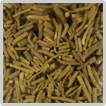 |
Ashwagandha |
Ashwagandha (Withania somnifera) has been used successfully in Ayurvedic medicine for
centuries for various aliments. Ashwagandha is a plant, while the root and berry are used to
make medicine. The name Ashwagandha is from the Sanskrit language and is a combination
of the word ashva, meaning horse, and gandha, meaning smell. The root has a strong aroma
that is described as “horse-like.” In other meaning, since Ashwagandha can be classified as an
adoptogen22 it can provide energic force as an horse does. Medical researchers have been
studying ashwagandha with great interest and as of this date have carried out more than 200
studies of its healing benefits. The positive effects of Ashwagandha included improves learning,
memory,23 and reation time (increased acethycholine receptor activity);24 stimulate neural cells
regeneration (increased growth of axons and dendrites),25 reduces anxiety and depression
(GABA-like action);26 antioxidant and anti-inflammatory;27 and confers immune system
protection.28 Studies shown Ashwagandha could be a substant use in the therapeutic treatment
of neurodegenerative disese by it potent regeneration activity on nerve cells.29 Reseraches
also demonstrated Ashwagandha can protect the neuronal cells from beta-amyloid induced
cell damage which is the cause of Alzheimer’s disease.30 |
||
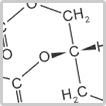 |
Phosphatidylserine |
Phosphatidylserine (PS) is essential to the function of all the cells in the body. It provides building
block for cell membranes, and neurotransmitter receptors. It is a nutrient to the brain cell. A high
concentration of PS can found in a healthy person’s brain. Its relative abundance in the brain
reflects its proven involvement in an assortment of nerve cell functions, including nerve
transmitter release and synaptic activity. It enhances mental function in young people,31
strengthens memory, boosts learning, increases vigilance and attention, intensifies concentration,
increases mental acuity, semantic skills, and controls over mood. It improves age-related
memory loss,32,33,34,35 Alzheimer’s disease,33 slows the loss of brain functions and rejuvenates them.36
While the body can make its own PS, there is increasing evidence that a daily supplement can
improve memory, mood, stress resistance, learning, and concentration. |
||
 |
Quercetin |
Quercetin, one of the flavonoids in fruits and vegetables, has a powerful antioxidant activity
both in vitro and in vivo. Quercetin is one of a broad group of natural polyphenolic flavonoid
substances that are being investigated for their widespread health benefits. These benefits have
generally been ascribed to its combination of antioxidant and anti-inflammatory activity, but
recent in vitro evidence suggests that improved brain and muscle mitochondrial biogenesis
could play an important role.37 Study shown quercetin attenuated d-galactose-induced (a toxin)
spontaneous behavioral and spatial memory impairments, suggesting a potential antiaging
effect of quercetin.38 Study also found that quercetin dramatically elevated the GAP43 mRNA
expression in the brain of D-gal-treated mice to regenerate normal function of neurons against
the cellular injury caused by D-galatose.39 According to researchers in the Department of Food
Science and Technology at Cornell University the effect of against oxidative stress-induced
neurodegeneration quercetin may be beneficial in helping to prevent Alzheimer’s disease.40
Quercetin also have antiviral, immunomodulatory, anticancer, and gastroprotective activities.
It may also have antial lergy activity and activity in preventing secondary complications of
diabetes. |
||
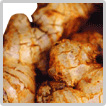 |
Tumeric |
Turmeric (Curcuma longa) is a plant native to tropical South Asia belonging to the ginger family.
Turmeric has been used in both Ayurvedic and Chinese medicine as an anti-inflammatory, to
treat digestive and liver problems, skin diseases, and wounds. Research has identified curcumin
as responsible for most of the biological activity of turmeric.41
Curcumin is a powerful antioxidant which can fight free radicals to prevent its damage effect on cell membranes and DNA. Turmeric is currently being investigated for possible benefits in Alzheimer’s disease,42,43 cancer,44 arthritis, pancreatis, and eye inflammatoy disease. Result of study from the UCLA found that turmeric may play a role in slowing down the progression of the neurodegenerative disease.45,46 Data were then published in 2001,47 demonstrating that curcumin was particularly effective in reducing neurodegeneration, oxidative damage, diffuse plaque deposition, aberrant inflammation and impaired inflammatory clearance.48,49 In the matter of facts, all these bad processes are found in the brain of patients suffering massive dementia or Alzheimer’s disease. Turmeric is widely used in cooking and gives Indian curry its flavor and yellow color. The finding may help to explain why rates of Alzheimer’s are much lower among the elderly in India who take curry food than in their Western peers. |
||
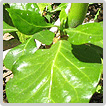 |
Green Tea Extract |
There are three main varieties of tea — green, black, and oolong, that all are derived from the
leaves of the Camellia sinensis plant The difference between the teas is in their processing. Green
tea is prepared from unfermented leaves, the leaves of oolong tea are partially fermented, and
black tea is fully fermented. The more the leaves are fermented, the lower the polyphenol
content and the higher the caffeine content.50 Polyphenols particularly Epigallocatechin Gallate
(EGCG) are powerful antioxidants.51 Green tea has been extensively studied in people, animals,
and laboratory experiments. Results from these studies suggest that green tea may be useful for
improving mental function,52 preventing neural degeneration,53,54 atherosclerosis,55 high
cholesterol,55 diabetes,56 inflammatory disease, cancer,57 liver disease and weight loss.58
Extract of Green Tea offers a convenient way to get the benefits of green tea in a highly concentrated form. It is standardized for polyphenols, particularly EGCG. |
||
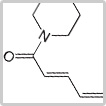 |
Bioperine |
Bioperine is a standardized extract form the fruit of Black pepper and / or long pepper that are
cultivated in the damp, nutrient-rich soil regions of south India. Bioperine has been clinically
tested and shown to significantly enhance the bioavailability of other supplements through
increased absorption. For example, Vitamin B6 can be absorbed 30-50 % more by adding
Bioperine. Some of the nutrients which may be co-administered with Biopherine to increase their
absorption include herbal extracts (such as Curcumin, Ashwagandha and Gingo biloba),
vitamins (such as B1, Niacin, B6, Vitamin A and E), amino acids (such as lysine and methionine),
and minerals (such as calcium, zinc, selenium manganese and potassium). Possible mechanism
of its effect included increases blood supply to the GI tract, increases emulsifying content of the
gut, and increases active nutrient transport. |
||
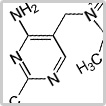 |
Thiamine (Vitamin B1) |
Vitamin B1 functions in combination with adenosine triphosphate (ATP) to form coenzymes
necessary for converting carbohydrates into energy in nervous system and muscles.59 Vitamin B1
maintains normal function of nervous system, enhances mental alert, reduces physical and
mental fatigue, and improves depression. Studies had shown
Thiamin deficiency contributes to dementia of Alzheimer’s type,60 and supply this vitamin benefit patients with Alzheimer’s disease.61,62 |
||
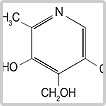 |
Pyridoxine (Vitamin B6) |
Vitamin B6, also called pyridoxine, is one of eight water-soluble B vitamins. The B vitamins play
an important role in maintaining muscle tone in the gastrointestinal tract and promoting the
health of the nervous system,63 skin, hair, eyes, mouth, and liver. Vitamin B6 acts as coenzyme
for metabolic functions affecting protein, carbohydrates and fat utilization participating in the
process of making important brain chemicals called neurotransmitters. Vitamin B6 is essential for
normal brain development and function,64,65 enhances energy production, and helps sleep by
increasing serotnin. In addition pyridoxine is considered an “anti-stress” vitamin66,67 because it
is believed to enhance the activity of the immune system and improve the body’s ability to
withstand stressful conditions. |
||
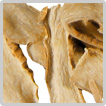 |
Tien Ma (Rhizoma Gastrodiae Elatae) |
Gastrodiae Elatae, Tien Ma, cultivate mainly in China, had been used for thousands of year.
The root contains a number of phenolic compounds, mainly Vanilline, with medicinal actions.
Vanilline can be absorbed in the small intestine rapidly shows up in the liver and quickly
permeates the blood-brain barrier to the brain. It is a sweet, acrid, herb that is analgesic,
anticonvulsive, antispasmodic, carminative, cholagogue, sedative and tonic Tien Ma improves
blood flow to the brain and the heart. It’s sedative effect give an action of anti-convulsion and
painkilling. Studies shown it can increase the tolerance of brain to lack of oxygen. Tien Ma also
improves the immune system.68 |
||
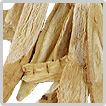 |
Astragalus Membranaceus |
Astragalus Membranaceus is an important and wildly used herb in Chinese medicine for many
years. Astragalus is usually combined with other plants to achieve the desired effect. It is thought
that it strengthens the vital energy of the body whereas in Western world the possibly nearest
approximation to this concept is that it is an adaptogenic plant meaning it is thought to help
protect the body against various stresses, including physical, mental, or emotional stress.
Modern researches have shown Astragalus protects the blood-brain barrier of brain from injury,69
protects against ischemic brain injury,70 and helps brain recovery from ischmic trauma.71
Astragalus also has properties of antioxidant, hepatoprotective, immune stimulation and
anticancer that works as an anti-aging herb. |
||
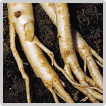 |
Ginseng |
Ginseng is widely used in Asia, China, Japan and Korean and regarded by the professionals
and the public as a stimulant. In traditional Chinese herbology, Panax ginseng was used to
strengthen the lung and digestion, calm the spirit, wake the mind, and increase overall energy.
In the West many consider ginseng as an adaptogen.72
The active contents in ginseng are believed to be substances known as ginsenosides. Different
ginsenosides appear to have differing actions, and the exact mixture of ginsenosides in a given
ginseng product may play a large role in its efficacy. Ginseng can increase the defense ability
of the organism, promote healing and reduce the toxicity of certain chemicals.73 It increases
the ability of analysis, promotes cognitive functions,74 mental functions, |
||
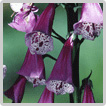 |
Rehmannia |
Rehmannia Root is one of the most popular and important tonic herbs in Traditional Chinese
Medicine, where it has been used for thousands of years. The fresh or dried roots have been
used in China for centuries to treat a long list of ailments and was even used as a tonic to
counter the effects of aging.77 The processed Rehmannia Root (Shu di huang) is considered a
“Tonic for the Blood” and supports the body’s resources to enhance circulation throughout the
body, especially to the brain. A chemical Catalpol containg in the Rehmannia is considered as
the effective components, has many pharmacological actions, such as ameliorates cognition
deficits and attenuates oxidative damage in the brain,78 anti-brain ischemia, anti-senile
dementia,79,80 promoting neuro-remodeling81 and reducing capillary permeability. |
||
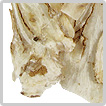 |
Angelica Sinensis |
Angelica sinensis, a famous traditional Chinese medicine,
has been widely used in treatment of gynecological disease. Modern scientific
study demonstrated that Angelic sinensis extract possessed the activity
to prevent the neurotoxicity induced by Ab-associated oxidative stress
(Ab is a pathological hallmark of Alzheimer’s disease) and AChE activity
implying that Angelica has a potential role in the prevention of Alzheimer’s
diseases.82 Angelica improves mental function on cerebral infarction
type of stroke through multiple pathways, including anti- arthrosclerosis,
improving microcirculation, anti-platelet aggregation , anti-inflammatory
and anti-oxidative effects.83 Study shown angelica
has neuroprotective efficacy on mitigating brain infarction and global
ischemia as well as preventing the neurodegeneration following ischemia.
Owing to their multi-function, including improving cerebral blood circulation,
they therefore have the potential to alleviate the symptoms of degenerative
diseases, Alzheimer’s disease (AD) and Parkinson’s disease (PD).84 Ferulic
acid has been identified to be an active component of Angelica Sinensis
which may reverse memory deficits induced by a variety of toxins.85,86,87,88
Z-ligustilide has been identified to be another active component from
volatile of Radix Angelica sinensis. It may protect brain and cognition
especially against focal and global ischemia induced by permanent common
carotid arteries occlusion and transient middle cerebral artery occlusion.89,90,91
Treatment with Z-ligustilide reduces brain injury after a subarachnoid
hemorrhage.92 Study also shown Angelica not only can suppress growths
of malignant brain tumors of rat and human origin but also shrink the
volumes of tumor, significantly prolonging survivals.93 |
||
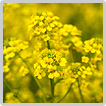 |
Bupleurum Chinensis |
Bupleurum is also known as Hare’s Ear. The part of this plant used medicinally is the root. In
Chinese Herbology Bupleurum is classified into a category of vital energy regulator and liver
smoother. This herb contains a chemical known as saikosaponins that account for much of the
medicinal activity of the plant. Bupleurum is an adaptogen and its function included
hepatoprotective, anti-inflammatory, sedative, antipyretic, and analgesic. Bupleurum has a
unique reputation for deeply cleansing the overburdened liver. It helps the liver to eliminate
impurities and waste matter from the system. It plays a role of protector to the brain and other
organs. |
||
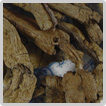 |
Acori Graminei Rhizoma |
Shi Cheng Pu, Rhizoma Acorus gramine in Chinese, is a very old herb that had been used for
regain consciousness, calm convulsive attack and eliminate fullness in the stomach in China
and other Asia countries such as India. Modern scientific researches demonstrated it has many
effects that can be used for human aliments including antiacetylcholinesterase,94 antioxident,95,96,97,98
neuroprotective,99,100,101,102,103 antiproliferative,104and immunomodulartory.105 Studies also shown
Acrous can enhance learning and memory functions by increasing norepinephrine, dopamine
and serotonin relative levels, and by decreasing the activity of acetylcholinesterase in the
cerebra.106
One of the chemical component of Acrous, eugenol, may act by blocking Abeta-induced- Ca(2+) intake and provide a strong case for further pursuit of the therapeutic and prophylactic potentials of Acrous and its active principles for the management of Alzheimer’s disease.107 |
||
Reference
[1] Kiss B, Karpati E. Mechanism of action of vinpocetine [in Hungarian; English abstract]. Acta Pharm Hung . 1996;66:213–214.[2] Miyazaki M. The effect of a cerebral vasodilator, vinpocetine, on cerebral vascular resistance evaluated by the Doppler ultrasonic technique in patients with cerebrovascular diseases. Angiology. 1995;46:53–58. [3] Bereczki D, Fekete I. A systematic review of vinpocetine therapy in acute ischaemic stroke. Eur J Clin Pharmacol. 1999;55:349–352. [4] Szilagyi G, Nagy Z, Balkay L et al. Effects of vinpocetine on the redistribution of cerebral blood flow and glucose metabolism in chronic ischemic stroke patients: a PET study. J Neurol Sci . 2005;229-230:275-84. [5] Bonoczk P, Panczel G, Nagy Z. Vinpocetine increases cerebral blood flow and oxygenation in stroke patients: a near infrared spectroscopy and transcranial Doppler study. Eur J Ultrasound. 2002;15(1-2):85-91. [6] Hitzenberger G, Sommer W, Grandt R. Influence of vinpocetine on warfarin-induced inhibition of coagulation. Int J Clin Pharmacol Ther Toxicol . 1990;28:323–328. [7] Sitges M, Nekrassov V. Vinpocetine selectively inhibits neurotransmitter release triggered by sodium channel activation. Neurochem Res. 1999 Dec;24(12):1585-91. [8] Horvath B, Marton Z, Halmosi R, Alexy T, Szapary L, Vekasi J, Biro Z, Habon T, Kesmarky G, Toth K. In Vitro Antioxidant Properties of Pentoxifylline, Piracetam, and Vinpocetine. Clinical europharmacology: January/February 2002 – Volume 25 – Issue 1 – pp 37-42. [9] Meyer ED, Sauermann K. Pilot study about the application of Cavinton in ENT. Z Klin Med. 1985;40:51-54 [10] Bodo D, Kotovskaia AR, Galle RR, Gavrilova LN, Gusakova GA. Effectiveness of the preparation Gavinton in preventing motion sickness. Kosm Biol Aviakosm Med. 1982;16:49-51. [11] Dangour AD, Allen E, Elbourne D, Fasey N, Fletcher AE, Hardy P, Holder GE, Knight R, Letley L, Richards M, Uauy R. Effect of 2-y n-3 long-chain polyunsaturated fatty acid supplementation on cognitive function in older people: a randomized, double-blind, controlled trial. Am J Clin Nutr. 2010 Jun;91(6):1725-32. Epub 2010 Apr 21 [12] Simopoulos AP. The importance of the ratio of omega-6/omega-3 essential fatty acids. Biomed Pharmacother. 2002 Oct;56(8):365-79. [13] Fedorova I, Hussein N, Baumann MH, Di Martino C, Salem N, Jr. An n-3 fatty acid deficiency impairs rat spatial learning in the Barnes maze. Behav Neurosci. 2009;123(1):196-205. [14] Fedorova I, Salem N, Jr. Omega-3 fatty acids and rodent behavior. Prostaglandins Leukot Essent Fatty Acids. 2006;75(4-5):271-289. [15] Kalmijn S, van Boxtel MP, Ocke M, Verschuren WM, Kromhout D, Launer LJ. Dietary intake of fatty acids and fish in relation to cognitive performance at middle age. Neurology. 2004;62(2):275-280. [16] Kalmijn S, Launer LJ, Ott A, Witteman JC, Hofman A, Breteler MM. Dietary fat intake and the risk of incident dementia in the Rotterdam Study. Ann Neurol. 1997;42(5):776-782. [17] Morris MC, Evans DA, Bienias JL, et al. Consumption of fish and n-3 fatty acids and risk of incident Alzheimer disease. Arch Neurol. 2003;60(7):940-946. [18] Kyle DJ, Schaefer E, Patton G, Beiser A. Low serum docosahexaenoic acid is a significant risk factor for Alzheimer’s dementia. Lipids. 1999;34 Suppl:S245. [19] Conquer JA, Tierney MC, Zecevic J, Bettger WJ, Fisher RH. Fatty acid analysis of blood plasma of patients with Alzheimer’s disease, other types of dementia, and cognitive impairment. Lipids. 2000;35(12):1305-1312. [20] Tully AM, Roche HM, Doyle R, et al. Low serum cholesteryl ester-docosahexaenoic acid levels in Alzheimer’s disease: a case-control study. Br J Nutr. 2003;89(4):483-489. [21] van Marum RJ. Current and future therapy in Alzheimer’s disease. Fundam Clin Pharmacol. 2008;22(3):265-274. [22] Bhattacharya SK, Muruganandam AV. Adaptogenic activity of Withania somnifera: an experimental study using a rat mode of chronic stress. Pharmacol Ciochm Behav 2003 Jun;75(3):547-55. [23] Dluley JN. Nootropic-like effect of ashwagandha in mice. Phytother Re. 2001 Sep;15(6):524-8. [24] Karnick CR, Indian Medicine, 3(2,3):1-5, April-July, 1991 4. Kuboyama T, Tohda C, Komatsu K. Neuirtic regeneration and synaptic reconstruction induced by Withanolide A. Br J Pharmacol. 2005 Apr;144(7):961-71 [25] Archana R, Namasivayam A. Antistressor effect of Withania somnifera. J Ethnopharmacol. 1999 Ja;64(1):91-3. [26] Bhattacharys SK, Satyan KS, Ghosal S. Antioxidant activit of glycowithanolides from Withania somnifera. Indian J Exp Biol. 1997 Mar;35(3):236-9 [27] Mishua LC, Singh BB, Dgenais S. Scientific basis for the therapeutic use of Withania somnifera: a review. Altern Med Rev. 2000 Aug;5(4):334-46. [28] Tohda C, Kuboyama T, Komatsu K. Search for natural products related to regenration of the neuronal network. Neurosignals. 2005;14(1-2):34-45. [29] Jayaprakasam B, Padmanabhan K, Nair MG. Withanamides in Withaia somnifera frut protect PC-12 cells from betaamyloid responsible for alzheimer’s disease. Phytother Res. 2010 Jun;24(6):859-63. [30] Benton D et al. The influence of phosphatidylserine supplementation on mood and heart rate when faced with an acute stressor. Nutr. Neurosci. 2001;4(3):169-78 2. Cenacchi T, Bertoldin T, Farina C, et al. Cognitive decline in the elderly: a double-blind, placebo-controlled multicenter study on effecicacy of phosphatidylserine administration. Aging (Milano). 1993;5:123133. 3. Delwaide PJ, Gyselynck-Mambourg AM, et al. Double-bline randomized controlled study of phsophatidylserine in senile demented patients. Acta Neurol Scand. 1986;73:136-140. 4. Villardita C, Grioli S, Salmeri G, et al. Multicentre clinical trial of brain phosphatidylserine in elderly patients with intellectual deterioration. Clin Trials J. 1987;24:84-93. 5 Amaducci L. Phosphatidylserine in the treatment of Alzheimer¡¦s disease: Results of a multicenter study. Psychopharmacol Bull. 1988;24:130-134. 6. Suzuki S et al. Oral administration of soybean PS reduces ischemic damage in the gerbil hippocampus. Jpn I Pharmacol. 1999 Oct;81[2]:237-9 [31] Cenacchi T, Bertoldin T, Farina C, et al. Cognitive decline in the elderly: a double-blind, placebo-controlled multicenter study on effecicacy of phosphatidylserine administration. Aging (Milano). 1993;5:123133. [32] Delwaide PJ, Gyselynck-Mambourg AM, et al. Double-bline randomized controlled study of phsophatidylserine in senile demented patients. Acta Neurol Scand. 1986;73:136-140. [33] Villardita C, Grioli S, Salmeri G, et al. Multicentre clinical trial of brain phosphatidylserine in elderly patients with intellectual deterioration. Clin Trials J. 1987;24:84-93. [34] Amaducci L. Phosphatidylserine in the treatment of Alzheimer¡¦s disease: Results of a multicenter study. Psychopharmacol Bull. 1988;24:130-134. [35] Suzuki S et al. Oral administration of soybean PS reduces ischemic damage in the gerbil hippocampus. Jpn I Pharmacol. 1999 Oct;81[2]:237-9 [36] David JM, Murphy EA, Carmichael MD, Davis B. Quercetin increases brain and muscle mitochondrial biogenesis and exercise tolerance. Am J Physiol Regul Integr Comp Physiol 2009 Apr;296(4):R1071-7. Epub 2009 Feb 11. [37] Su Wen Sun, Hu Qing Yu, Hong Zhang, Yuan Lin Zheng, Jian Jun Wang, Lan Luo. Quercetin attenuates spontaneous behavior and spatial memory impairment in d-galactose–treated mice by increasing brain antioxidant capacity. Nutrition Research. Vol 27, Issue 3, March 2007, Pages 169-175 [38] Lu J, Zheng YL, Luo L, Wu DM, Sun DX, Feng YJ. Quercetin reverses D-galactose induced neurotoxicity in mouse brain. Behav Brain Res. 2006 Aug 10;171(2):251-60. Epub 2006 May 16. [39] Heo HJ, Lee Y. Protective effects of quercetin and vitamin C against oxidative stress-induced neurodegeneration. J Agric Food Chem 2004;52:7514-7. [40] Aggarwal BB, Sundaram C, Malani N, Ichikawa H (2007). “Curcumin: the Indian solid gold”. Adv. Exp. Med. Biol. 595: 1–75. [41] Yang F, Lim GP, Begum AN, et al. Curcumin inhibits formation of amyloid beta oligomers and fibrils, binds plaques, and reduces amyloid in vivo. J Biol Chem. 2005;280(7):5892-5901. {42] Lim GP, Chu T, Yang F, Beech W, Frautschy SA, Cole GM. The curry spice curcumin reduces oxidative damage and amyloid pathology in an Alzheimer transgenic mouse. J Neurosci. 2001;21(21):8370-8377. [43] Choi, Hyunsung; et al. (July 2006). “Curcumin Inhibits Hypoxia-Inducible Factor-1 by Degrading Aryl Hydrocarbon Receptor Nuclear Translocator: A Mechanism of Tumor Growth Inhibition”. Molecular Pharmacology 70 (5): 1664–71. [44] Frautschy, SA; Harris-White, ME, Miller, SA, Kim,P., Jimenez,I, Csizar E, Talamantes V, Balverde, Z, Chen PP, Yang, F., Cole GM, Joseph, JA, Shukitt, Hale, B. (Fall 2000). “Prevention of Aß amyloid peptide infusion induced behavioral deficits neuroinflammation and neurodegeneration by dietary anti-inflammatory antioxidant supplements”. 20th Annual Meeting Society for Neuroscience. New Orleans. [45] Pan R, Qiu S, Lu DX, Dong J. Curcumin improves learning and memory ability and its neuroprotective mechanism in mice. Chin Med J (Engl). 2008;121(9):832-839. [46] Frautschy, S.A.; Hu W, Kim P, Miller SA, Chu T, Harris-White ME, Cole GM. (Nov 2001). “Phenolic anti-inflammatory antioxidant reversal of Abeta-induced cognitive deficits and neuropatholo”. Neurobiol Aging 22 (6): 993–1005. [47] Lim, GP; Chu T, Yang F, Beech W, Frautschy SA, Cole GM. (2001). “The curry spice curcumin reduces oxidative damage and amyloid pathology in an Alzheimer transgenic mouse”. J Neurosci 21 (21): 8370–7 [48] Frautschy SA, Hu W, Kim P, et al. Phenolic anti-inflammatory antioxidant reversal of Abeta-induced cognitive deficits and neuropathology. Neurobiol Aging. 2001;22(6):993-1005. [49] Dulloo AG, Duret C, Rohrer D, et al. Efficacy of a green tea extract rich in catechin polyphenols and caffeine in increasing 24-h energy expenditure and fat oxidation in humans. Am J Clin Nutr . 1999;70:1040-1045. [50] Craig WJ. Health-promoting properties of common herbs. Am J Clin Nutr . 1999;70(suppl):491S-499S. [51] Shinichi Kuriyama, Atsushi Hozawa, Kaori Ohmori, Taichi Shimazu, Toshifumi Matsui, Satoru Ebihara, Shuichi Awata, Ryoichi Nagatomi, Hiroyuki Arai and Ichiro Tsuji Green tea consumption and cognitive function: a cross-sectional study from the Tsurugaya Project. American Journal of Clinical Nutrition, Vol. 83, No. 2, 355-361, February 2006. [52] Jae Woong Lee, et al. Green Tea (-)-Epigallocatechin-3-Gallate Inhibits ß-Amyloid-Induced Cognitive Dysfunction through Modification of Secretase Activity via Inhibition of ERK and NF-?B Pathways in Mice. J. Nutr. 2009 139: 10 1987-1993. [53] Silvia A. Mandel*, Tamar Amit, Limor Kalfon, Lydia Reznichenko and Moussa B. H. Youdim. Targeting Multiple Neurodegenerative Diseases Etiologies with Multimodal-Acting Green Tea Catechins. J. Nutr. 2008 138: 8 1578S-1583S [54] Geleijnse JM, Launer LJ, Hofman A, Pols HA, Witteman JCM. Tea flavonoids may protect against atherosclerosis: the Rotterdam study. Arch Intern Med. 1999;159:2170-2174. [55] Gomes A, Vedasiromoni JR, Das M, Sharma RM, Ganguly DK. Anti-hyperglycemic effect of black tea (Camellia sinensis) in rat. J Ethnopharmocolgy . 1995;45:223-226. [56] Fujiki H, Suganuma M, Okabe S, et al. Mechanistic findings of green tea as cancer preventive for humans. Proc Soc Exp Biol Med . 1999;220(4):225 – 228. [57] Kovacs EM, Lejeune MP, Nijs I, Westerterp-Plantenga MS. Effects of green tea on weight maintenance after body-weight loss. Br J Nutr Mar 1, 2004;91(3):431-437. [58] Bender DA. Optimum nutrition: thiamin, biotin and pantothenate. Proc Nutr Soc. 1999;58(2):427-433. [59] Glaso M, Nordbo G, Diep L, Bohmer T. Reduced concentrations of several vitamins in normal weight 2004 patients with late-onset dementia of the Alzheimer type without vascular disease. J Nutr Health Aging.;8(5):407-413. [60] Kish SJ. Brain energy metabolizing enzymes in Alzheimer’s disease: alpha-ketoglutarate dehydrogenase complex and cytochrome oxidase. Ann N Y Acad Sci. 1997;826:218-228. [61] Meador K, Loring D, Nichols M, et al. Preliminary findings of high-dose thiamine in dementia of Alzheimer’s type. J Geriatr Psychiatry Neurol. 1993;6(4):222-229. [62] Selhub J, Bagley LC, Miller J, Rosenberg IH. B vitamins, homocysteine, and neurocognitive function in the elderly. Am J Clin Nutr. 2000;71(2):614S-620S. [63] Riggs KM, Spiro A, 3rd, Tucker K, Rush D. Relations of vitamin B-12, vitamin B-6, folate, and homocysteine to cognitive performance in the Normative Aging Study. Am J Clin Nutr. 1996;63(3):306-314. [64] Deijen JB, van der Beek EJ, Orlebeke JF, van den Berg H. Vitamin B-6 supplementation in elderly men: effects on mood, memory, performance and mental effort. Psychopharmacology (Berl). 1992;109(4):489-496. [65] Bryan J, Calvaresi E, Hughes D. Short-term folate, vitamin B-12 or vitamin B-6 supplementation slightly affects memory performance but not mood in women of various ages. J Nutr. 2002;132(6):1345-1356. [66] Balk EM, Raman G, Tatsioni A, Chung M, Lau J, Rosenberg IH. Vitamin B6, B12, and folic acid supplementation and cognitive function: a systematic review of randomized trials. Arch Intern Med. 2007;167(1):21-30. [67] Bown. D. Encyclopaedia of Herbs and their Uses [68] You Zhi Qu, Min Li, Yan Ling Zhao, Zhen Wei Zhao, Xiao Yan Wei, Jin Ping Liu, Li Gao, Guo Dong Gao. Astragaloside IV attenuates cerebral ischemia–reperfusion-induced increase in permeability of the blood-brain barrier in rats. European J. Phar. Vol606, issue 1-3, March 2009, 137-141. [69] Yumin Luo, Zhen Qin, Zhen Hong, Xinmin Zhang, Ding Ding, Jian-Hui Fu, Wei-Dong Zhang, Jun Chen.Astragaloside IV protects against ischemic brain injury in a murine model of transient focal ischemia. Neuroscience Letters. Vol 363, issue 3, 17 June 2004, 218-223. [70] He Ting, Ming Liang, Wang Shao-Bin, Wu Qiang, Yin Yan-Yan, Li Wei-Ping. Protective effects of extract of astragalus on injuries of global cerebral ischemia and reperfusion in rats and anoxia in mice. Chinese Phar. Bulletin 2004-05. [71] Forgo I, Kayasseh L, staub JJ. Effect of a standardized ginseng extract on general well-being, reaction time, lung function and gonadal hormones. Med Welt. 1981;32:751-756. [72] Ellis JM, Reddy P. Effects of Panax ginseng on quality of life. Ann Pharmacother. 2002;36:375-379. [73] Sorensen H, Sonne J. A double-masked study of the effects of ginseng on cognitive functions. Curr Ther Res. 1966:57;959-968. [74] D’Angelo L et al. A double blind,placebo-controlled clinical study on the effect of standardized ginseng extract on psychomotor performance in healthy volunteers. J Ethnopharmacol. 1986;16:15-22. [75] .Siegl C, Siegl HJ. The possible revision of impaired mental abilities in old age: a double-blind study with Panax ginseng. Therapiewoche. 1979;29:4209-4216. [76] Xiuli Zhang, Aihong Zhang, Bo Jiang, Yongming Bao, Jingyun Wang, Lijia An. Further pharmacological evidence of the neuroprotective effect of catalpol from Rehmannia glutinosa. Phytomedicine. Vol 15, Issue 6-7, 20 June 2008: 484-490 [77] Xiu Li Zhang, Bo Jiang, Zhi Bo Li, Shuang Hao, Li Jia An. Catalpol ameliorates cognition deficits and attenuates oxidative damage in the brain of senescent mice induced by d-galactose. Pharmacology Biochemistry and Behavior. Vol. 88, Issue 1; Nov 2007:64-72 [78] Feng Yin-man, Gao Zhi-qing, Yao Jian-ping. Effect of Rehmanniate Decoction on Brain Function and the Activity of Acetylcholinesterase in Dementia Mice. Liaoning J of TCM. 2002-03 [79] Liu Dan-yang, et al. Effects of compound rehmannia on AchE in mice with SAM-P/8 Alzheimer’s disease. J Qiqihar Med College 2010-23. [80] Tang YQ et al. Protective effects of plant of rehmannia root extract on mitochondrial respiratory function of heart, brain and kidney in hypoxia rat. Zhongcaoyao. 2002, vol. 33;10: 915-917. [81] Shih-Hao Huang, Chun-Mao Lin, Been-Huang Chiang. Protective effects of Angelica sinensis extract on amyloid b-peptide-induced neurotoxicity. Phytomedicine 15 (2008) 710–721 [82] Yi-Chian Wu1 and Ching-Liang Hsieh. Pharmacological effects of Radix Angelica Sinensis (Danggui) on cerebral infarction. Wu and Hsieh Chinese Medicine 2011, 6:32. [83] Lin B. Polyphenols and Neuroprotection against Ischemia and Neurodegeneration. Mini Rev. Med Chem. 2011 Oct 28. [84] T. Mamiya, M. Kise, and K. Morikawa. Ferulic acid attenuated congnitive deficits and increase in carbonyl proteins induced by buthonine-sulfoximine in mice. Neuroscience Letters, vol. 430, no. 2, pp. 115–118, 2008. [85] M. J. Kim, S. J. Choi, S.-T. Lim et al. Ferulic acid supplementation prevents trimethyltin-induced cognitive deficits in mice Bioscience, Biotechnology and Biochemistry, vol. 71, no. 4, pp. 1063–1068, 2007. [86] L. Yu, Y. Zhang, R. Ma, L. Bao, J. Fang, and T. Yu. Potent protection of ferulic acid against excitotoxic effects of maternal intragastric administration of monosodium glutamate at a late stage or pregnance on developing mouse fetal brain. European Neuropsychopharmacology, vol. 16, no. 3, pp. 170–177, 2006. [87] J. J. Yan, J. Y. Cho, H. S. Kim et al., “Protection against ß-amyloid peptide toxicity in vivo with long-term administration of ferulic acid,” British Journal of Pharmacology, vol. 133, no. 1, pp. 89–96, 2001. [88] X. Kuang, J. R. Du, Y. X. Liu, G. Y. Zhang, and H. Y. Peng, Postischemic administration of Z-Ligustilide ameliorates cognitive dysfunction and brain damage induced by permanet forebrain forebrain ischemia in rats. Pharmacology Biochemistry and Behavior, vol. 88, no. 3, pp. 213–221, 2008. [89] H. Y. Peng, J. R. Du, G. Y. Zhang et al. Neuroprotective effect of Z-Ligustilide against permanent focal ischemic damage in rats. Biological and Pharmaceutical Bulletin, vol. 30, no. 2, pp. 309–312, 2007. [90] X. Kuang, Y. Yao, J. R. Du, Y. X. Liu, C. Y. Wang, and Z. M. Qian, Neuroprotective role of Z-Lilgustilide against forebrain ischemic injury in mice. Brain Research, vol. 1102, no. 1, pp. 145–153, 2006. [91] Di Chen, Jiping Tang, Nikan Khatibi, Mei Zhu, Yingbo Li, Chengyuan Wang, Rong Jiang, Liu Tu, Shali Wang. Treatment with Z-Ligustilide, a Component of Angelica sinensis, Reduces Brain Injury after a Subarachnoid Hemorrhage in Rats. Pharmacol Exp Ther June 2011 337:663-672. [92] Harn HJ, Lin SZ, Lin PC, Lin CY, Lin PY, Chang LF, Yen SY, Hsieh DK, Lin FC, Tai DF, Chiou TW. Local interstitial delivery of z-butylidenephthalide by polymer wafers against malignant human gliomas. Neuro Oncol. 2011 Jun;13(6):635-48. [93] Bermejo Benito P, Abad Martinez MJ, Silvan Sen AM, et al. In vivo and in vitro antiinflammatory activity of saikosaponins. Life Sci 1998;63:1147-56. [94] Pulok Kumar Mukherjee, Venkatesan Kumar, Mainak Mal, Peter J. Houghton. In vitro Acetylcholinesterase Inhibitory Activity of the Essential Oil from Acorus calamus and its Main Constituents. Planta Med 2007; 73(3): 283-285. [95] Gacche, R.N., Dhole N.A. Antioxidant and possible anti-inflammatory potential of selected medinal plants prescribed in the Indian traditional system of medicine. Phar Bioology 2006;44(5):389-395. [96] Acuna U.M., Atha D.E., Ma J., Nee M.H., Kennelly E.J. Antioxidant capacities of ten edible Notth American plants. Phytother Res 2002;16(1):63-65. [97] Manikandan S., Srikumar R., Jeya Parthasarathy N., Sheela, Devi R. Protective effect of Acorus calamus LINN on free radical scavengers and lipid peroxidation in discrete regions of brain against noise stress exposed rat. Biol Pharm Bull 2005;28(12):232702330. [98] Manikandan S., Devi R..S. Antioxidant property of alpha-asarone against noise-stree-induced changes in different regions of rat brain. Pharmacol Res 2005;52(6):467-474. [99] Pradeep K Shukla et al. Neuroprotective effect of Acorus calamus against middle cerebral artery occlusion–induced ischaemia in rat Hum Exp Toxicol April 2006 25: 187-194 [100] Pradeep K. Shukla, Vinay K. Khanna, M. M. Ali, R. R. Maurya, S. S. Handa, R. C. Srimal. Protective effect of Acorus calamus against acrylamide induced neurotoxicity. Phytotherapy Research. Vol 16 Isuues3:May 2002; 256-260. [101] Bombi Lee, YoungKook Choi, Hocheol Kim, Sun Yeou Kim, Dae-Hyun Hahm, Hye-Jung Lee, Insop Shim. Protective effects of methanol extract of Acori graminei rhizoma and Uncariae Ramulus et Uncus on ischemia-induced neuronal death and cognitive impairments in the rat. Life Sciences, Volume 74, Issue 4, 12 December 2003, Pages 435-450. [102] Ji Hyun Kim, Dae-Hyun Hahm, Hye-Jung Lee, Kwang Ho Pyun, and Insop Shim. . Acori graminei rhizoma Ameliorated Ibotenic Acid-Induced Amnesia in Rats. Evid Based Complement Alternat Med. 2009 December; 6(4): 457–464. [103] Jungsook Cho, Nam Eok Joo, Jae-Yang Kong, Dae-Young Jeong, Kap Duk Lee, Byung-Soo Kang. Inhibition of excitotoxic neuronal death by methanol extract of Acori graminei rhizoma in cultured rat cortical neurons. Journal of Ethnopharmacology, Volume 73, Issues 1–2, November 2000: 31-37. [105] Mehrotra S., Mishra K.P., Maurya R., SrimalR.C., Yadav V.S., Oandey R., Singh V.K. anticellular and imunosupressive properties of ethanolic extract of Acorus calamus rhizoma. Int Immunopharmacol 2003;3(1):53-61. [106] Zhang H, Han T, Yu CH, Rahman K, Qin LP, Peng C. Ameliorating effects of essential oil from Acori graminei rhizoma on learning and memory in aged rats and mice. J. Pharm Pharmacol. 2007 Feb;59(2):301-9. [107] Ji Hyun Kim, Dae-Hyun Hahm, Hye-Jung Lee, Kwang Ho Pyun, Insop Shim. Acori graminei rhizoma ameliorated ibotenic acid-induced amesia in rats. Evid Based Complement Alternat Med 2009 Dec; 6 (4):457-464. |
 |
|||
| These statements have not been evaluated by the Food and Drug Administration. This product is not intended to diagnose, treat, cure, or prevent any disease. |